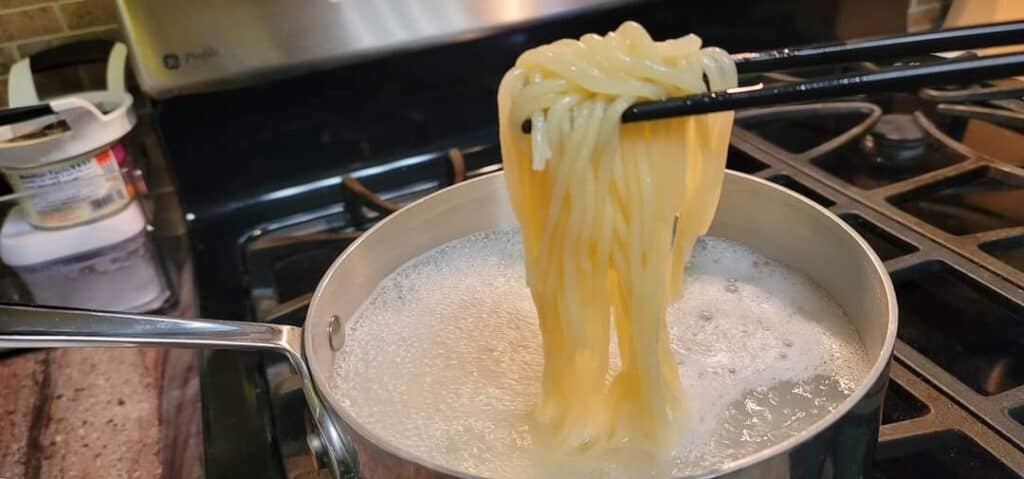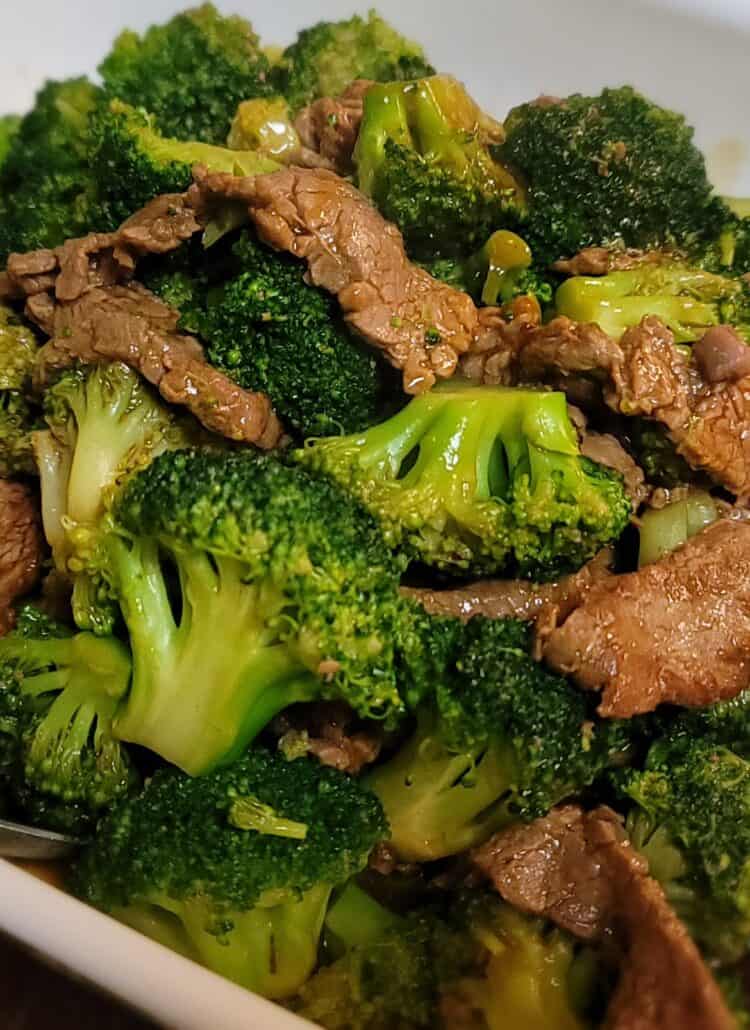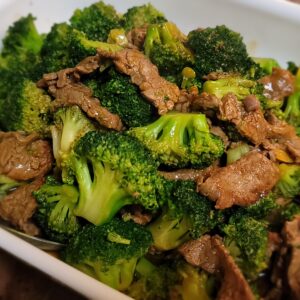Disclaimer: This post may contain affiliate links which means I may receive a small commission from purchases made through links. However, these are products that I would wholeheartedly recommend to my family and friends regardless if I make a small commission at no cost to you as a consumer.
How to prepare ramen noodles at home?

Gone are the days of opening up a package of instant noodles with a salty seasoning packet. Good quality ramen is taking the culinary scene by storm in the past 10 years. Many restaurants mainly serve ramen noodles. However, it is not something you could only eat at a specialty restaurant. I LOVE ramen! I often serve ramen bowls as quick lunch or dinner. Therefore, I needed to be a pro home cooks ramen and have a good recipe I could make at home so I could enjoy this whenever I crave it.
Preparing ramen at home is easier than you think. All you need to know about how to prepare ramen noodles at the comfort of your own home is just a few components of ingredient. It should be as easy as 1, 2, and 3!! So, let’s see how to prepare restaurant-quality ramen at home. Here is our menu to wipe up this delicious dish!
1. Choosing the type of ramen
There are two types of ramen noodles
Choosing the right type of ramen is essential to your success.
Option 1. Dried noodles
Dried noodles should be a stable in any household, especially if you love to eat ramen. It is shelf stable so you could wipe to prepare any ramen recipes. We want to look for chewy texture after the noodles is cooked. There are a few options of dried noodles that you could go with.
Instant ramen noodles package is the easiest option. It comes in various formats. My recommendation is to pick one with a texture that you like. The texture is one of the most important aspects of homemade ramen noodles. You could set aside the flavor packet or seasoning packet that comes with it, or I just discard them. Refer to the package instruction on how to make ramen noodles from package.
Here are two I usually go for and they are easily accessible on Amazon or many Asian grocery stores like HMart. Shin Ramyun and Samyant brands of noodles has great texture.
Other dry ramen noodles options that are not from these instant packages. These products just include the dry ramen and don’t come with a seasoning packet. They both have the great texture of chewy noodles. Other choices could be wheat noodles, udon noodles, or rice noodles. They are all good choices for making homemade ramen. Here are two that are a stable in my pantry.
DragonMall Wu-Mu has a firm chewy texture. It takes only minutes to cook in boiling water. Best thing is, they don’t break down and get mushy in the ramen soup. This is also a great option for other ramen dishes, like stir fry, lo mein, etc. Hime Dried Udon is another great choice as ramen noodles. It also has a firm chewy texture noodles and it is bouncy, a great choice for what we are making. This dry noodle takes a little longer to cook but it is worth the wait. This is also a dry noodles that could be use in all different kinds of ramen recipe, like Japanese curry udon.
All of these ramen noodles choices have tons of almost perfect reviews. Check it out on Amazon links above.
Option 2. Fresh ramen noodles
For a bowl of easy homemade delicious ramen, fresh noodles are an absolute game changer. By comparison, they are a step up from dry ramen noodles. After all, fresh is always best! It will take your easy homemade ramen recipe to the next level. There are many varieties of fresh noodles on the market.
Sun Noodle and Nona Lim are easily accessible. It’s available in the refrigerated section at Asian grocery stores like HMart, or even at Whole Foods Market. It does come with some sort of soup mix, like a soy sauce packet) depending on which flavor you get. Just like what I did with instant ramen packs, I would set it aside and use my own ramen broth.
These are only a couple of easily accessible ones. There is a whole world of fresh noodles if you explore an Asian grocery store (like Hmart or 99 Ranch) that has many Chinese, Korean, and Japanese varieties in the refrigerated section. I tend to look for wavy ramen noodles since they usually have a great texture.
2. Choosing hot broth
In a sauce pan, heat up hot broth in medium heat (depending on the cook time and amount of starch on your noodles, I would cook the noodles separately).
I normally have homemade chicken broth or homemade chicken stock on hand and that’s my go-to for ramen soup recipe. If you don’t have homemade, chicken broth from a box would work well. In a pinch, you could generally use some Better Than Bouillon which would also do the trick, just dilute a 1 tablespoon per 1 cup of water and heat up in medium heat. It comes in chicken, beef, and vegetable base.
3. Choosing add-ons and toppings
Here is where we have lots of fun. Be creative, the world is your oyster. Or not, just put whatever that needs to be used up in your fridge.
Vegetarian Toppings
Protein Toppings
finishing touches
4. How to make ramen step by step?
What is the best way to prepare ramen noodles?
The best way to prepare ramen noodles is on a stovetop. Cook ramen noodles to the right doneness by following the instruction. Also taste test as you are cooking it since sometimes cooking time on packaging could be a little off. Cook noodles separately from your ramen soup to ensure you have the clearest soup base. Fresh noodles cooks really quickly, however, they are usually covered with extra starch to prevent clumping. So if you are not cooking fresh noodles separately, it could make your ramen bowl too guppy.
PRO TIPS on cooking ramen noodles: to get the best texture, noodles need to have either a change in temperature or need to breathe during cooking. You could pick up the noodles from the boiling water with a pair of chopsticks or a pair of tongs and let them air out for a few seconds, then drop them right back into the boiling water. Another way is once it comes up to a boil, put some cold water into the pot to cool it down, once it comes back to a boil, repeat the same process and do this for a total of 3 times.
Making ramen broth
Heat the ramen broth of your choice. Once it comes up to a boil, you could cook some of the toppings on medium heat, like fish balls, enoki mushrooms, shiitake mushrooms, carrots, etc. I like to blanch toppings like green onions or bean sprouts at this time as well so it tastes a little bit more mellow, it is optional.
We are now ready to assemble your homemade ramen!!
Assembling ramen bowl
Pick out a big ceramic bowl that will hold 1 serving of everything you are preparing. I normally go for ones that have a big handle or some feet, so when I need to move the ramen bowl full of hot soup, it won’t burn my hands and cause an accident. Put a ladle of ramen broth into each of your ramen bowls to slowly swirl it around. Then pour the ramen broth back into the pot. This step will help heat up your bowl for better heat retention.
First, add noodles to the heated ramen bowls. Then, ladle broth onto the noodles. Lastly, topped with toppings and finish touches (like dried seaweed, sesame seeds, and fish sauce for extra flavor). By all means, add as much as you wanted.
This is all you need to know on how to prepare ramen noodles!
This is all you need to know on how to prepare ramen noodles. Cooking homemade ramen is not just a way to fill your stomach — it’s a creative outlet, and the result of your hard work will be savored by you for days! So don’t be afraid to take the plunge, pick up some fresh ingredients, and see what deliciousness awaits you in your homemade ramen kitchen. Who knows, you might just surprise yourself and become the homemade ramen master you didn’t know you were! Bon appétit!











My sons and grandsons love Ramen. I always keep it in my pantry. I am going to follow so many of your recipes in this blog.
I love ramen! This is awesome!
This sounds delicious!
Would love to try!